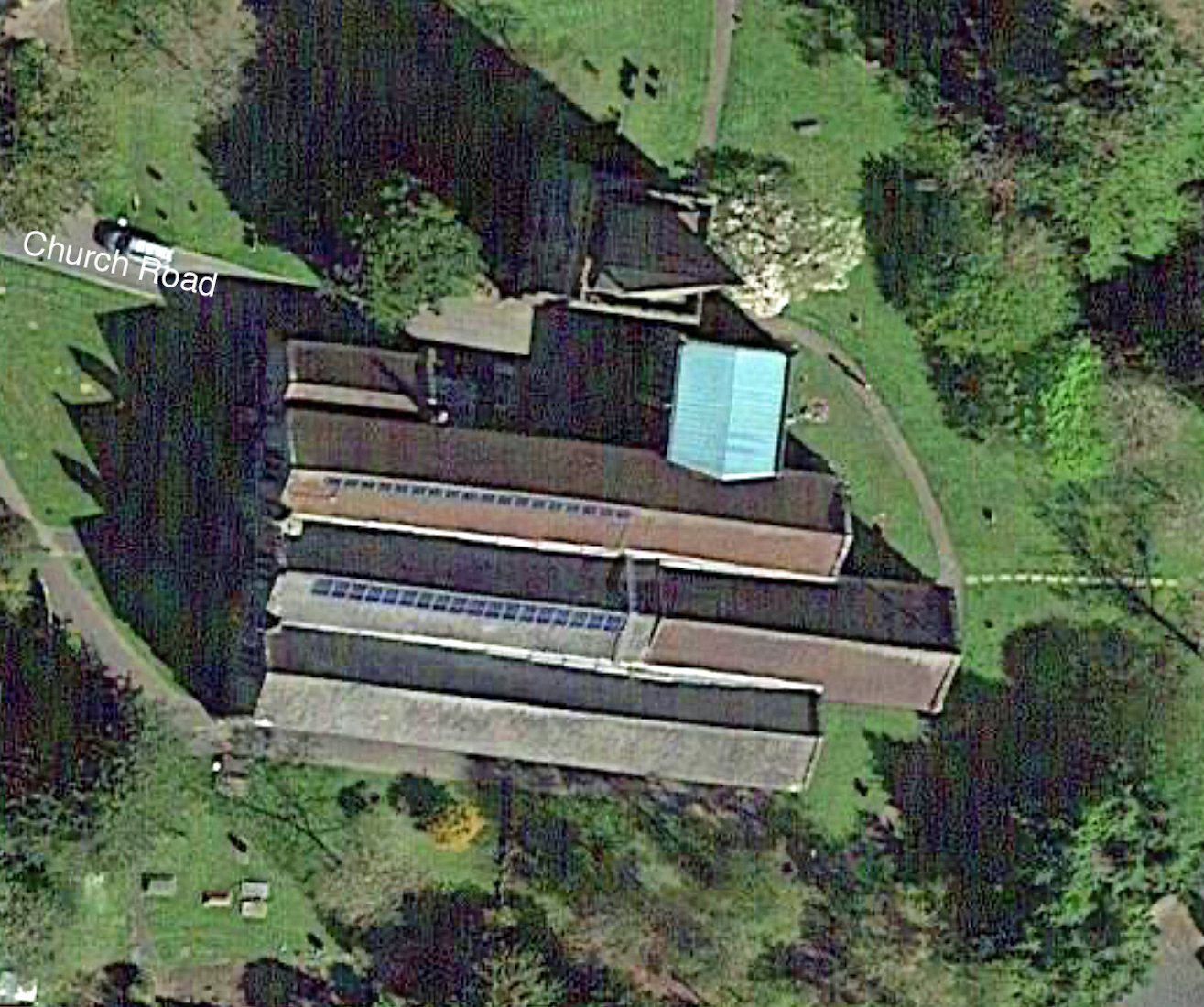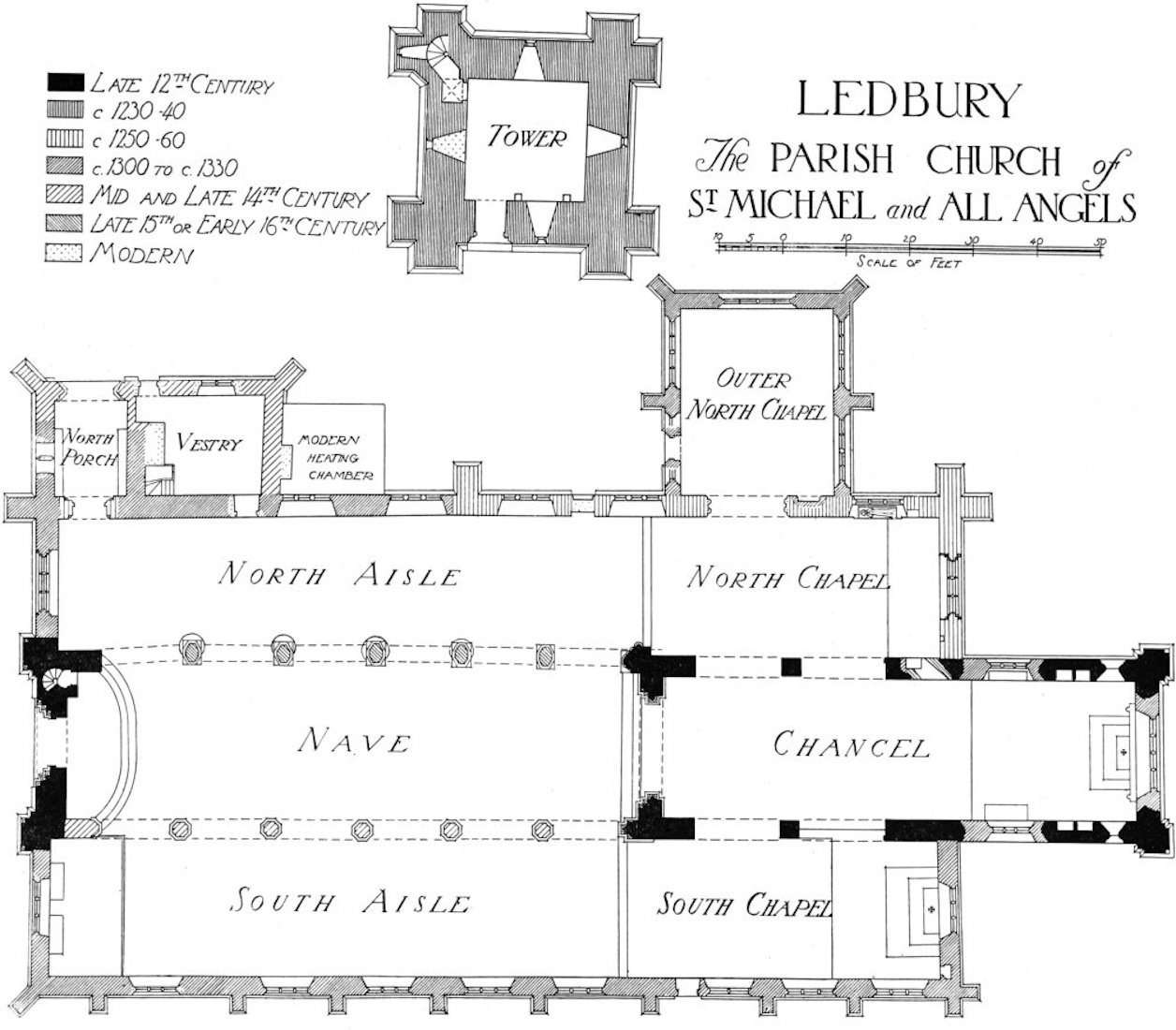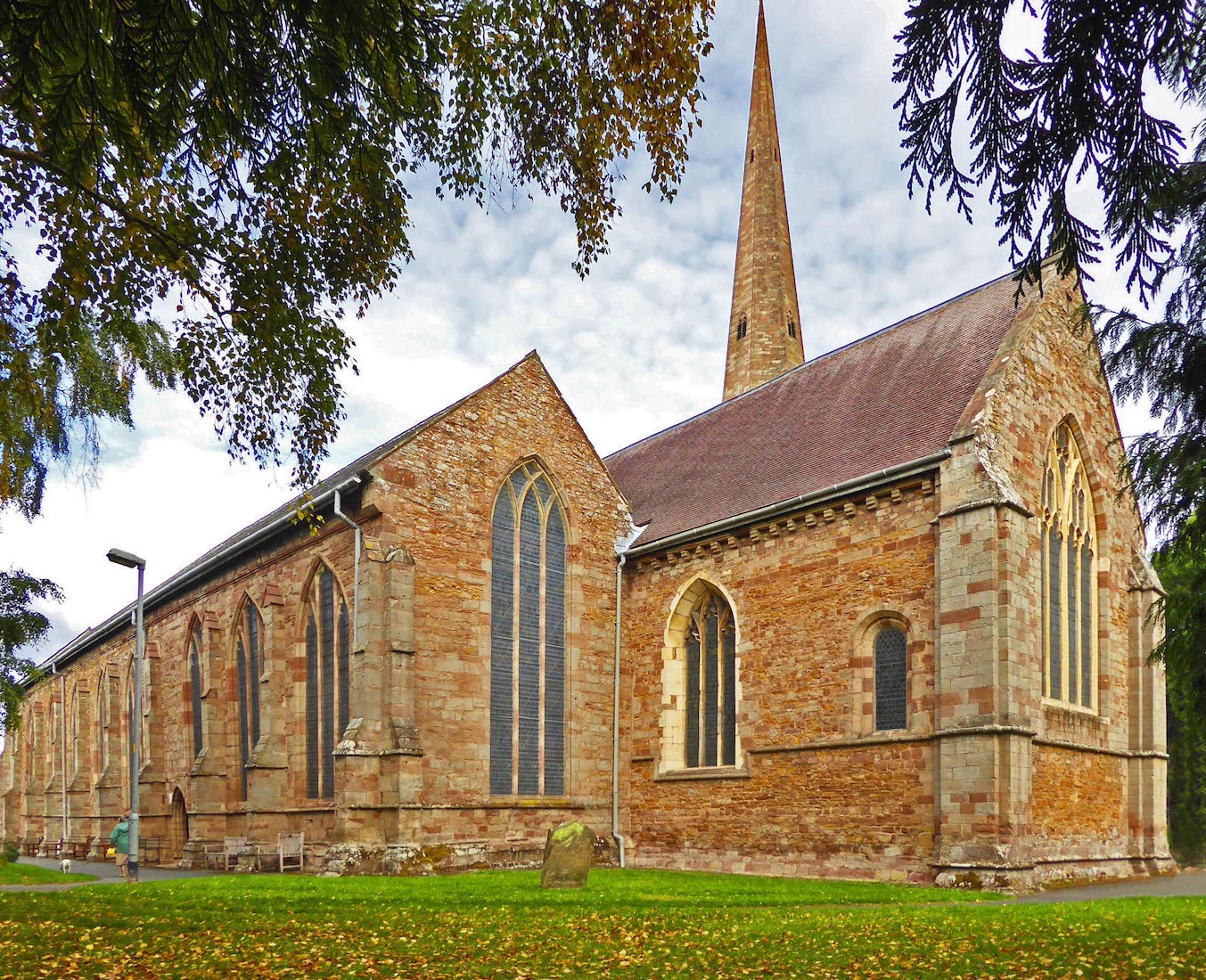The photographs on this website have been mostly provided by the photographers Aidan McRae Thomson, ‘Jules & Jenny’, Wendy Harris and ‘Glass Angel’. Their contributions are denoted in the text by the initials AMT, J&J, GA and WH. I am very grateful to them for the use of their excellent photographs, and more details are given in the Conclusion.
A brief history of this Church is given below. However, if you want to begin your tour of the Church immediately, tap / click on START . You can also access intermediate points in the tour by a tap / click on the following links:
41 Chancel
NOTE ON MAGNIFYING IMAGES
With this website format the images are large enough for most purposes. If there is a need for greater magnification of an image, go to the identical photo on the appropriate website listed in the Conclusion.

SATELLITE VIEW
The Parish Church of St Michael and All Angels lies a little distance east of the market town of Ledbury, accessible by Church Road. It is a large Church, surrounded by grass and parkland. The axis of the Church is almost due east-west, with the sanctuary to the east. We can therefore easily identify the geographical directions with the liturgical directions we use – for example East (with a capital E) denoting the direction of the sanctuary.
The main body of the Church is made up of a central nave with a covered nave aisle on either side. The central nave has then been considerably extended to include a chancel and sanctuary. Attached to the North side is a large chapel (or Chapter House) with blue roof, and a North porch at the West end. Also to the North and separate from the Church is a wonderful tower and spire. There appear to be solar panels on the roof, but these are invisible from the grounds close to the Church.
In our exploration of this Church, we shall approach along Church Road before circumnavigating the Church in an anticlockwise direction. We then enter the Church via the North porch.

PLAN
This excellent plan comes from British History; it is so helpful having a detailed and accurate plan!
Next to the two-storeyed North porch is the vestry – also two-storeyed. The Outer North Chapel is now called ‘St Katherine’s Chapel’ or the ‘Chapter House’.
The rectangle at the West end of the South Aisle marks a memorial area dedicated to the Biddulph family. We shall also find that there are a number of other interesting memorials and much beautiful stained glass in this Church.
HISTORY
Year Built: C12 – C16
Address: Church Road, Ledbury
Simon Jenkins Rating: ****
55 Major British Churches: √
The parish church is St Michael and All Angels. Historian Sir Nikolaus Pevsner has described Ledbury as ‘the premier parish church in Herefordshire’.
The current church was built in the twelfth century, with further extensions and changes up to the 15th century, but it was built on earlier foundations and some of the visible foundations are believed to be those of the earlier Anglo-Saxon church.
The church tower is unusual in being built separately from the nave; one of seven Herefordshire church towers with that feature. It was built about 1230, and a spire was added in 1733.
https://wikishire.co.uk/wiki/Ledbury#Parish_church
There was a church here before the Domesday Book of 1086, but the current building dates to the 12th century. The 12th century core was extended and refinished in the 12th and 16th centuries.
The impressive tower was built around 1230, with the spire added in 1733. Unusually, the tower is not connected to the body of the church.
One of the highlights of the interior is the chapter house, which was built in 1330. Within the chapter house is the effigy of a Benedictine monk, an iron-bound oak chest used for storing parish records, and objects discovered after the Civil War Battle of Ledbury.
The nave arcade is remarkable for a series of round port-hole windows, the last vestige of a 12th-century clerestory.
There are two fonts. The oldest dates to the 17th century, the more recent to the Victorian period. The 17th-century font was thought to be lost but was later discovered to have been broken into small fragments which were hidden within the base of the 19th-century font.
The sanctuary boasts a 14th-century east window and several fine monuments to members of prominent local families. A special monument commemorates the poet John Masefield, a native of Ledbury.
Another monument is the 1630 memorial to Edward and Elizabeth Skynner in the chancel. The memorial shows the couple kneeling, facing each other over a prayer desk, with their ten children beneath them, five girls and five boys. Between the couple is a baby wrapped in swaddling, to signify a child that died in infancy. The detail of the period costumes is remarkable.
Against the south wall is a memorial to later Skynners, Captain Samuel Skynner (d 1725) and his wife Anne (d 1723). Captain Skynner’s bust is shown against a backdrop of naval symbols. When he died he left £6 a year – one to the vicar to say a sermon on Candlemas day and the other five to be distributed on the same day to ‘twenty poor House-keepers, not receiving alms’.
In the north chapel is a 13th-century effigy of an unknown cleric in the robes of a Benedictine monk. This originally formed a coffin lid but now stands upright. Another medieval effigy is that of an unknown 14th-century woman of the Carew family.
There are several very good memorial brasses. The oldest is that of William Calwe (died circa 1410) showing the deceased dressed in academic robes. Another medieval memorial brass is that of Thomas Capel (d 1490), showing a figure in armour and a livery collar.
Behind the altar is a copy of Leonardo Da Vinci’s painting The Last Supper, painted by local artist Thomas Ballard in 1824.
In the west wall near the entrance is a stained glass panel shaped to act as a sundial when light shines through it. Just below the sundial is a collection of medieval glass fragments.
The exterior is notable for the wonderfully carved and turreted west front, crafted in the 12th century.
St Michael’s Church stands at the upper end of Church Lane, easily reached off the market place.
https://www.britainexpress.com/attractions.htm?attraction=3908



